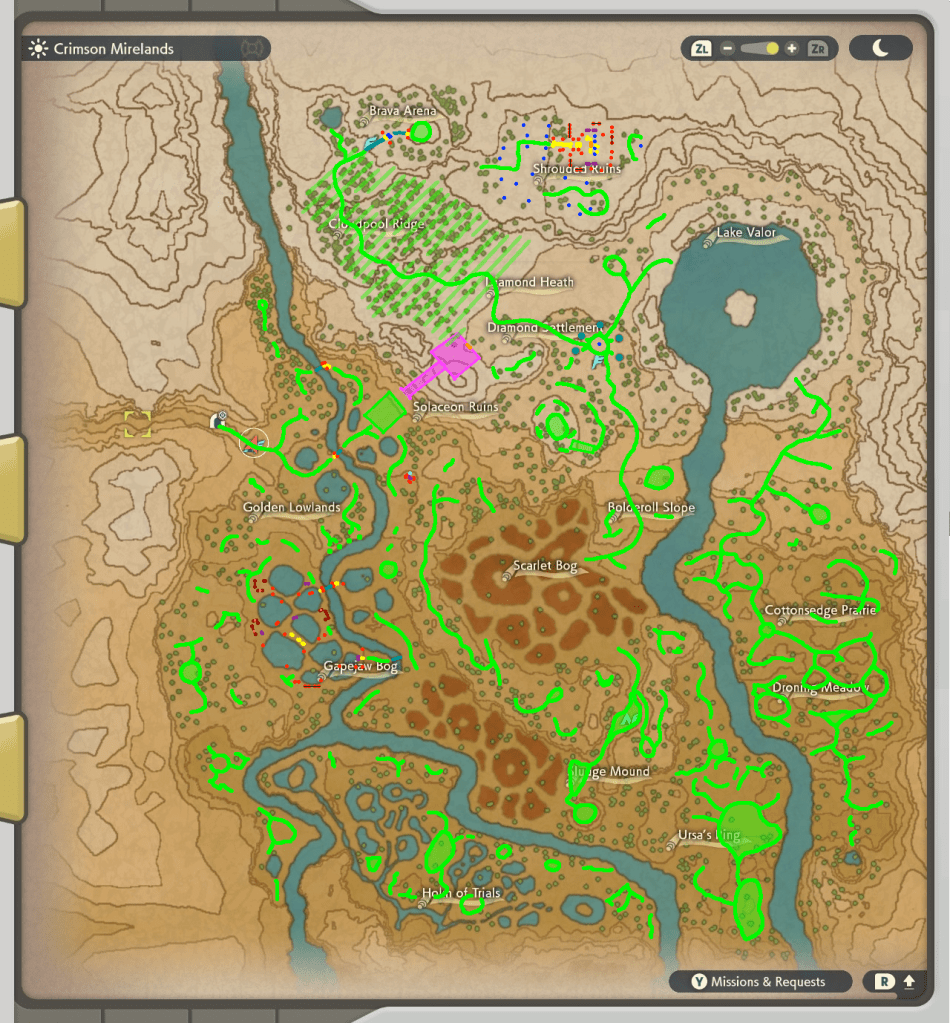[I was playing Legends: Arceus, but then after I finished exploring the Crimson Mirelands I dropped everything for, like, a week to perform an archaeological survey and write up the results in the style of an actual academic publication. Was this a good idea? No, obviously not, but I did it and here it is.]
Although the Galaxy Expedition Team’s understanding of the contemporary ecology, geography and society of the Hisui region has advanced dramatically in the short time since the expedition’s arrival here, the region’s ancient past is still largely an enigma. This is largely because no branch of the GET is explicitly dedicated to historical and cultural research. These tend to fall by default within the broad and somewhat nebulous responsibilities of the Survey Corps, as the branch whose members most often interact with Hisui’s indigenous peoples, the Diamond and Pearl Clans. In the interests of pursuing cultural research more actively, and at the recommendation of Survey Corps recruits assigned to the Crimson Mirelands of southeast Hisui, who had encountered several ancient “ruins” while exploring, the GET commissioned members of the Corps to identify sites of archaeological interest throughout the Mirelands and evaluate sites for possible future excavation by a joint crew drawn from the Survey and Construction Corps.
In a break with usual practice in survey archaeology, project staff were not instructed to catalogue surface finds. This is owing to the annoying propensity of the Hisui region’s characteristic dimensional anomalies to deposit artefact fragments of varying ages seemingly at random across the landscape. The resulting archaeological “noise” makes it extremely difficult to extract a meaningful chronology of human settlement from survey data using the standard methods of survey archaeology. Accordingly, the survey has focused primarily on mapping architectural remains that are visible from the surface, as well as features of the landscape that may be artificial in origin. This report discusses four major sites identified by the survey – the Gapejaw Bog Complex, Solaceon Ruins, Brava Arena and Shrouded Ruins – as well as the general characteristics of earth and stone archaeological features observed throughout the Crimson Mirelands.
This survey would not have been possible without the cooperation and guidance of numerous members of the indigenous Diamond and Pearl Clans, particularly Diamond Clan Warden Arezu, Pearl Clan Warden Calaba and Diamond Clan chieftain Adaman, all of whom have freely shared their knowledge and expertise with project staff. Staff also wish to acknowledge the contributions of numerous Pokémon recruited individually by members of the Survey Corps, as well as, and particularly, the regular invaluable aid of the “noble” Pokémon known as Wyrdeer and Ursaluna.

